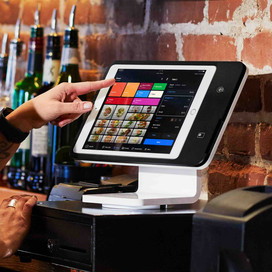Table of contents
We all know how much work it takes to open a restaurant and keep it running. It’s especially difficult to handle the swing of the seasons. Here are five tips for dealing with changing produce and business trends as the months get colder.
1. Adapt your menu
This might not apply to every restaurant out there, but these days customers care more about the quality of their produce and where it comes from than they have at any time in recent memory, especially in cities with progressive food cultures, like New York. In fact, in Nielsen’s report, We Are What We Eat, 80% of those surveyed in North America were willing to pay more money for healthier food. One natural method for adapting to seasonal change is simply to alter your menu.
On the down side, this means you might not be able to serve your ramp toast for more than a couple of weeks. But on the bright side, it means you can experiment and learn from the seasons. It’s also a very scalable concept, meaning you could go so far as to change your entire menu every three months, or you can take baby steps and replace your summer fruit bowl with roasted root vegetables.
2. Communicate with your farmers/distributors
It’s important to know how and when your produce is going to change with the seasons. Take a little extra time in the fall to talk to your product suppliers and especially your farmers. And if you don’t have a direct line of communication with them, open one. This way you’ll be more prepared for the necessary menu changes you need to make as summer turns into fall, and then, of course, winter.
If you don’t make regular seasonal menu changes, you have a little more time to source replacement ingredients. Your farmer will have a good idea, for example, how many more weeks of tomatoes she’ll have, and how much longer they will be at their peak.
3. Adapt your space
Cold walk-in space is precious. And so, for that matter, is dry storage space. Take time to assess your kitchen organization as your influx of produce changes. The battle for efficient walk-in organization is never truly won — it’s an exercise in adaptation and constant reflection.
Use these seasonal changeovers for strategic reassessment of your space. Instead of improvising on the fly, make calculated choices ahead of time: the shelf you use for summer microgreens is going to look awfully sparse in October. Maybe you should use it for pickling instead?
4. Manage your schedule proactively and carefully
One of the toughest issues going into the holiday season is scheduling. The peaks and valleys of fall/winter holiday business can be sharp, and you want to be prepared, but you also want to be respectful and conscious of your staff’s time. Your employees and cooks may want to travel or take vacation all around the same time.
While there is no perfect strategy for dealing with this, it’s crucial to communicate with your staff. Put up a vacation sign-up sheet. Send out regular email, starting in October, for blocks of November and December holiday time. Make compromises. It’s tough to prepare for the wild ups and downs of the restaurant business, but it’s even tougher to keep a restaurant running with an unhappy staff. Which finally brings us to:
5. Don’t forget to celebrate!
The holidays are nothing if not a time for celebration, for both you and your staff. It’s so easy to get caught up in the grind, long hours, and challenges of operating a kitchen (let alone running an entire restaurant), that many chefs forget this. You deserve to enjoy yourself every once in a while, and so do your employees. Take the time to prepare some extra-special family meals. The gesture will not go unappreciated. Remember your line cook who couldn’t get the time off for Thanksgiving? Maybe you can get her a four-day weekend in December to make up for it.
And most importantly, throw a holiday party! This isn’t often possible during the actual December holidays, but if you plan a post-holiday celebration for January or February, it will show your staff that you appreciate all their hard work. This is crucial for the culture and community of a successful restaurant, which is proven to lower turnover rates and increase productivity of your restaurant staff. And besides, January can be a rough month with no parties.
Sam White is a restaurant tech consultant and writer living in Crown Heights, Brooklyn. He’s worked in the food service industry for almost 15 years, mostly in FOH capacities. He loves learning about wine, being part of a food community, talking to strangers, and helping to smash the patriarchy.
![]()












